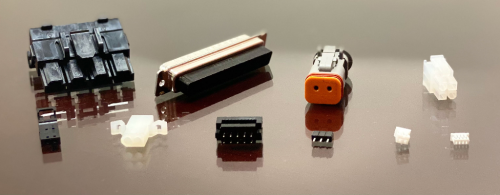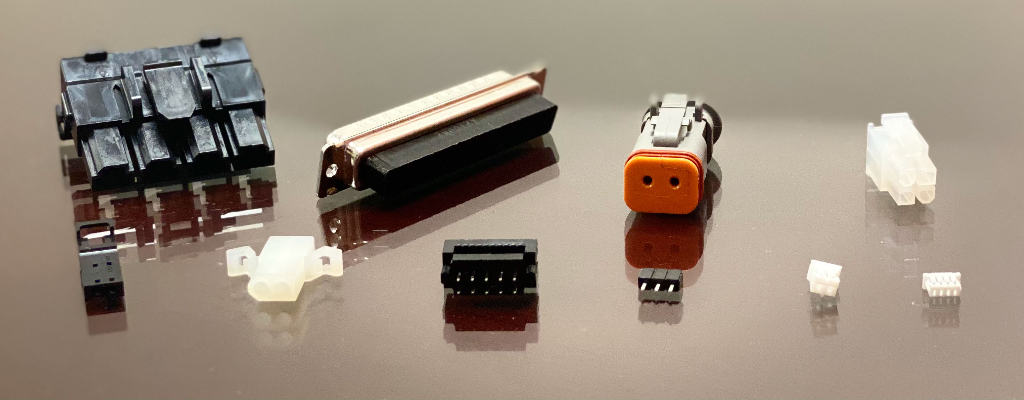Plastic Connector Housings: Material Selection and Performance Benefits
Plastic connectors are key components for signal transmission and power connection between electronic devices. Their housings are usually made of high-performance plastics, such as nylon and polycarbonate. These materials not only have excellent mechanical strength and can effectively protect the internal precision contacts from the external environment, but also have significant advantages such as lightweight, low cost and flexible processing.

Nylon housing: the perfect combination of strength and abrasion resistance
Nylon, as one of the commonly used materials for plastic connector housings, is known for its high strength, good wear resistance and chemical resistance. The nylon housing not only effectively resists the physical impact and abrasion of daily use, but also maintains structural stability in humid and corrosive environments. In addition, nylon materials have good processing properties and can easily manufacture connector housing with complex structures through processes such as injection molding to meet diverse design needs.
Polycarbonate housing: transparent and impact-resistant
Polycarbonate, another material widely used in plastic connector housings, is favored for its high transparency, excellent impact resistance and heat resistance. Polycarbonate housings can not only visually display the internal structure and status of the connector, but also effectively absorb and disperse the impact force in the event of an accidental fall or collision, protecting the internal contacts from damage. In addition, polycarbonate materials also have good processing stability and dimensional accuracy, ensuring the consistency and reliability of the connector housing during the manufacturing process.
Environmental protection trend of plastic connector housing
As global awareness of environmental protection increases, the material selection of plastic connector shells is increasingly inclined towards environmentally friendly materials. Environmentally friendly nylon and polycarbonate, through improved production processes and material formulations, have achieved lower volatile organic compound (VOC) emissions and higher recyclability, meeting international environmental standards and regulatory requirements. This not only helps reduce the negative impact of connectors on the environment during production and use, but also promotes the sustainable development of the connector industry.
Co-optimization of materials and design
Improving the performance of plastic connector housings not only depends on the selection of materials, but also needs to be closely coordinated with the internal structure of the connector, the contact material, and the manufacturing process. By optimizing the shell structure design, such as adding reinforcing ribs and adopting anti-loosening structures, the mechanical strength and stability of the connector can be further improved. At the same time, combined with advanced injection molding technology and precision processing equipment, high-precision manufacturing and assembly of connector shells can be achieved to ensure the electrical performance and reliability of the connector.
The material selection of plastic connector housing is based on comprehensive considerations of performance requirements, cost-effectiveness and environmental protection requirements. Nylon and polycarbonate, as common materials for plastic connector housings, have become the first choice for many electronic devices due to their excellent mechanical strength, wear resistance, transparency and impact resistance. KONNRA can further improve the performance and reliability of plastic connectors through the coordinated optimization of materials and design to meet the ever-changing market needs.










